Chapter 9 Using the Basic Preference Tools
The basic preference tools enable you to customize your desktop background, and to configure your keyboard settings and your mouse settings. You can use the basic preference tools to configure shortcut keys, to set your sound preferences, and to configure your network proxy. You can also use the basic preference tools to customize your screensaver, choose a theme and fonts for your desktop, and to customize your application menubars and toolbars. You can also customize window focus behavior.
This chapter describes how to use the basic preference tools to customize your desktop.
Opening a Basic Preference Tool
You can open one of the basic preference tools in either of the following ways:
-
From the Desktop Preferences menu
Choose Applications -> Desktop Preferences. Choose the preference tool that you require from the submenu. The dialog for the tool is displayed.
-
From the Start Here location
Open a
Nautiluswindow, then choose Go -> Start Here. Alternatively, double-click on the Start Here object on the desktop. The Start Here location is displayed. Double-click on the Desktop Preferences object in theNautiluswindow to display your preference tools.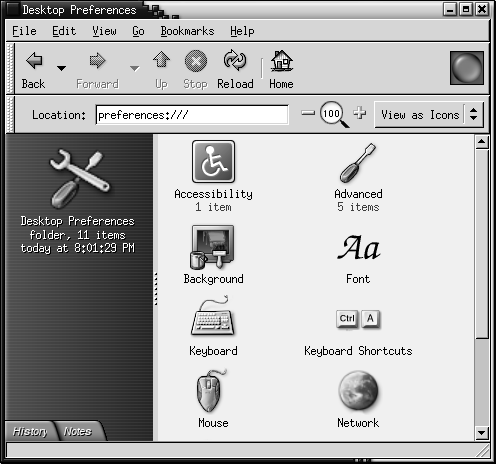
Double-click on the tool that you require. The dialog for the tool is displayed.
Customizing the Desktop Background
The desktop background is the image or color that is applied to your desktop. You can customize the desktop background in the following ways:
-
Select an image for the desktop background. The image is superimposed on the desktop background color. The desktop background color is visible if you select a transparent image, or if the image does not cover the entire desktop.
-
Select a color for the desktop background. You can select a solid color, or create a gradient effect with two colors. A gradient effect is a visual effect where one color blends gradually into another color.
You can also change the appearance of your desktop background from within
the Nautilus file manager.
Figure 9–1 Desktop Background Preference Tool
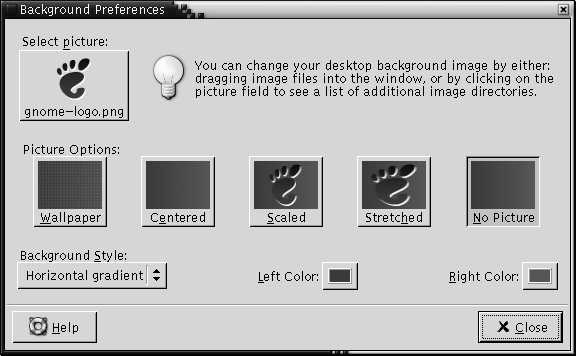
Table 9–1 lists the background settings that you can configure.
Table 9–1 Settings for Desktop Background
Choosing Default Fonts
Use the Font preference tool
to select the fonts to use on in your applications and on the desktop.
Figure 9–2 Font Preference Tool
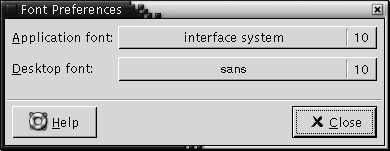
Table 9–2 lists the font settings that you can configure.
Table 9–2 Settings for Fonts|
Option |
Function |
|---|---|
|
Application font |
Click on the font selector button to select a font to use in your applications. |
|
Desktop font |
Click on the font selector button to select a font to use on your desktop only. |
Configuring Keyboard Settings
Use the Keyboard
preference tool to select the autorepeat settings for your keyboard, and to
configure the sound events that are associated with the keyboard.
You can customize the settings for the Keyboard
preference tool in the following functional areas:
-
Keyboard
-
Sound
Keyboard Settings
Use the Keyboard tabbed section to set general
keyboard preferences. To start the Keyboard accessibility preference tool, that is, AccessX,
click on the Accessibility button.
Figure 9–3 Keyboard Tabbed Section in Keyboard Preference Tool
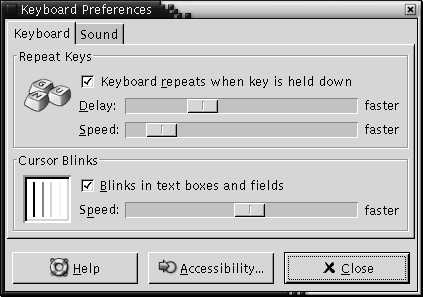
Table 9–3 lists the keyboard settings that you can configure.
Table 9–3 Settings for Keyboard|
Option |
Function |
|---|---|
|
Keyboard repeats when key is held down |
Select this option to enable keyboard repeat. If keyboard repeat is enabled, when you press-and-hold a key, the action associated with the key is performed repeatedly. For example, if you press-and-hold a character key, the character is typed repeatedly. |
|
Delay |
Select the delay from the time you press a key to the time that the action repeats. |
|
Speed |
Select the speed at which the action is repeated. |
|
Blinks in text boxes and fields |
Select this option to enable the cursor to blink in fields and text boxes. |
|
Speed |
Use the slider to specify the speed at which the cursor blinks in fields and text boxes. |
Sound Settings
Use the Sound tabbed section to set your preferences for keyboard sound.
Figure 9–4 Sound Tabbed Section in Keyboard Preference Tool

Some applications play a bell sound to indicate a keyboard input error. Use the options in the Sound tabbed section to configure the bell sound. Table 9–4 lists the keyboard sound settings that you can configure.
Table 9–4 Settings for Keyboard Sound|
Option |
Function |
|---|---|
|
Off |
Select this option to disable the keyboard bell. |
|
Beep |
Select this option to enable the keyboard bell. |
Customizing Keyboard Shortcuts
A keyboard shortcut is a key or combination of keys that provides an alternative to standard ways of performing an action.
Use the Keyboard Shortcuts preference tool
to display the default keyboard shortcuts. You can customize the default keyboard
shortcuts to your requirements.
You can also create hot keys. Hot keys are keyboard shortcuts that start applications.
Figure 9–5 Keyboard Shortcuts Preference Tool
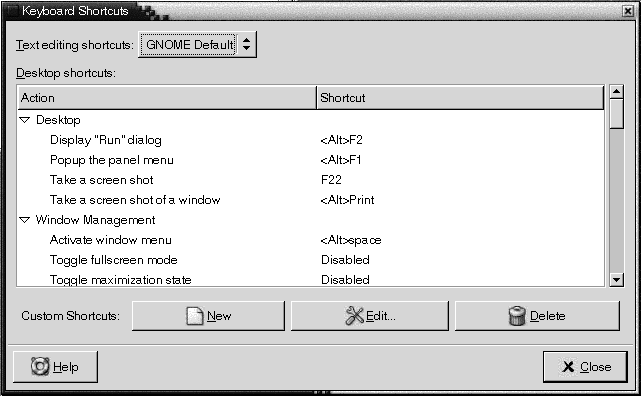
Table 9–5 lists the keyboard shortcut settings that you can customize.
Table 9–5 Default Settings for Keyboard Shortcuts
Customizing Menus and Toolbars in Applications
You can use the Menus & Toolbars preference tool to customize the appearance
of menus, menubars, and toolbars for GNOME-compliant applications.
Figure 9–6 Menus and Toolbars Preference Tool
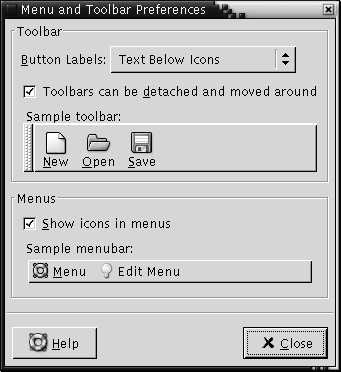
Table 9–6 lists the menu and toolbar settings that you can customize for GNOME-compliant applications.
Table 9–6 Settings for Customizing Applications
Configuring Mouse Settings
Use the Mouse preference tool
to configure your mouse for right-hand use or for left-hand use. You can also
specify the speed and sensitivity of mouse movement.
You can customize the settings for the Mouse
preference tool in the following functional areas:
-
Buttons
-
Cursors
-
Motion
Buttons Settings
Use the Buttons tabbed section to specify whether the mouse buttons are configured for left-hand use. You can also specify the delay between clicks for a double-click.
Figure 9–7 Buttons Tabbed Section in the Mouse Preference Tool
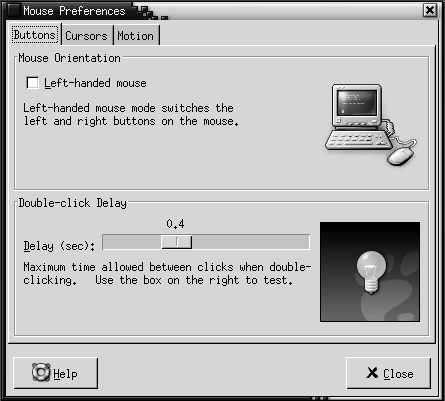
Table 9–7 lists the mouse button settings that you can configure.
Table 9–7 Settings for Mouse Buttons|
Option |
Function |
|---|---|
|
Left-handed mouse |
Select this option to configure your mouse for left-hand use. When you configure your mouse for left-hand use, the functions of the left mouse button and the right mouse button are swapped. |
|
Delay |
Use the slider to specify the amount of time that can pass between clicks when you double-click. If the interval between the first and second clicks exceeds the time that is specified here, the action is not interpreted as a double-click. |
Pointer Settings
Use the Cursors tabbed section to set your mouse pointer preferences.
Figure 9–8 Cursors Tabbed Section in the Mouse Preference Tool

Table 9–8 lists the mouse pointer settings that you can configure.
Table 9–8 Settings for Mouse Pointers|
Option |
Function |
|---|---|
|
Cursor Theme |
Select the mouse pointer theme that you require from the list box. |
|
Show position of cursor when the Control key is pressed |
Select this option to enable a mouse pointer animation when you press and release Ctrl. This feature can assist you to locate the mouse pointer. |
Motion Settings
Use the Motion tabbed section to set your preferences for mouse movement.
Figure 9–9 Motion Tabbed Section in the Mouse Preference Tool
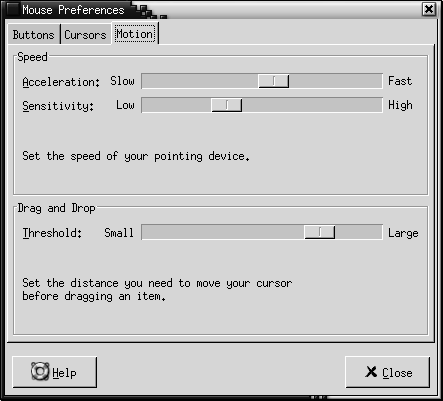
Table 9–9 lists the mouse motion settings that you can configure.
Table 9–9 Settings for Mouse Motion|
Setting |
Function |
|---|---|
|
Acceleration |
Use the slider to specify the speed at which your mouse pointer moves on your screen when you move your mouse. |
|
Sensitivity |
Use the slider to specify how sensitive your mouse pointer is to movements of your mouse. |
|
Threshold |
Use the slider to specify the distance that you must move an item before the move action is interpreted as a drag-and-drop action. |
Configuring Network Proxy Settings
The Network
Proxy preference tool enables you to configure how your system
connects to networks. You can configure the desktop environment to connect
to a proxy server, and specify the details of the proxy
server. A proxy server is a server that intercepts requests to another server,
and fulfills the request itself, if it can. You can enter the Domain Name
Service (DNS) name or the Internet Protocol (IP) address of the proxy server.
A DNS name is a unique alphabetic identifier for a
computer on a network. An IP address is a unique numeric
identifier for a computer on a network.
Figure 9–10 Network Proxy Preference Tool
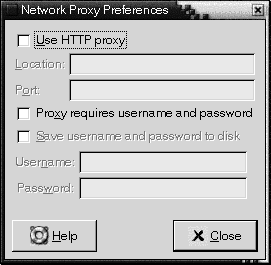
Table 9–10 lists the network proxy settings that you can configure.
Table 9–10 Network Proxy Settings|
Option |
Function |
|---|---|
|
Use HTTP Proxy |
Select this option to use a proxy server for the HTTP service. |
|
Location |
Enter the DNS name, or the IP address of the proxy server to use when you request a HTTP service. |
|
Port |
Enter the port number of the HTTP service on the proxy server. |
|
Proxy requires username and password |
Select this option if the proxy server requires a username and password. |
|
Save username and password to disk |
Select this option to save the username and password. |
|
Username |
Enter your username for the proxy server. |
|
Password |
Enter your password for the proxy server. |
Setting Screensaver Preferences
A screensaver is an application that you can use to replace the image on your screen when the screen is not in use. You can use screensavers in the following ways:
-
Activate after a specified period of idle time.
-
Activate when you lock your screen.
-
Manage power used by your monitor when your system is idle.
You can customize the settings for the Mouse
preference tool in the following functional areas:
-
Display Modes
-
Advanced
Display Modes Settings
Use the Display Modes tabbed section to set display mode preferences.
Figure 9–11 Display Modes Tabbed Section in the Screensaver Preference Tool

Table 9–11 lists the display mode settings that you can configure.
Table 9–11 Settings for Screensaver Display Mode
Advanced Settings
Use the Advanced tabbed section to set advanced screensaver preferences.
Figure 9–12 Advanced Tabbed Section in the Screensaver Preference Tool

Table 9–12 lists the advanced screensaver settings that you can configure.
Table 9–12 Advanced Screensaver Settings|
Setting |
Function |
|---|---|
|
Grab Desktop Images |
Some screensavers can take a screenshot of your screen, then manipulate the screenshot to create your screensaver display. Select this option to enable screensavers to take a screenshot of your screen. |
|
Grab Video Frames |
Some screensavers can capture a frame of video, then manipulate the captured image to create your screensaver display. If your system has a video capture card, select this option to enable screensavers to capture a frame of video. |
|
Choose Random Image |
Select this option to enable screensavers to use images from a directory that you select. Type the path for the directory in the field. Alternatively, click Browse to display a dialog from which you can select a directory. |
|
Verbose Dialognostics |
Select this option if you want to display screensaver diagnostic information. |
|
Display Subprocess Errors |
Select this option if you want to display errors related to screensaver subprocesses on screen. |
|
Display Splash Screen at Startup |
Select this option to if you want |
|
Power Management Enabled |
Select this option to enable power management of your monitor. Power management can reduce energy consumption by your monitor when you are not using the monitor. |
|
Standby After |
Specify how long to wait to put the monitor in standby mode. When the monitor is in standby mode, the screen is black. |
|
Suspend After |
Specify how long to wait to put the monitor in power-saving mode. |
|
Off After |
Specify how long to wait to switch off monitor. |
|
Install Colormap |
Select this option to install a private colormap when the screensaver is active. Use of a private colormap might improve the quality of the color in particular screensaver displays. |
|
Fade to Black When Blanking |
Select this option if you want your display to fade to black when the screensaver activates. |
|
Fade from Black When Unblanking |
Select this option if you want your display to fade from black to the screen contents when the screensaver stops. |
|
Fade Duration |
Specify how long to take to fade to black when the screensaver activates. |
Setting Sound Preferences
The Sound preference tool enables
you to control when the GNOME sound server starts. You can also specify which
sounds to play when particular events occur.
You can customize the settings for the Sound
preference tool in the following functional areas:
-
General
-
Sound Events
General Settings
Use the General tabbed section of the Sound preference tool to specify when to launch the GNOME sound
server. You can also enable sound event functions.
Figure 9–13 General Tabbed Section in the Sound Preference Tool

Table 9–13 lists the general sound settings that you can configure.
Table 9–13 Settings for Sound|
Option |
Function |
|---|---|
|
Enable sound server startup |
Select this option to start the GNOME sound server when you start a GNOME session. When the sound server is active, the desktop environment can play sounds. |
|
Sounds for events |
Select this option to play sounds when particular events occur in your desktop environment . You can select this option only if the Enable sound server startup option is selected. |
Sound Event Settings
Use the Sound Events tabbed section of the Sound preference tool to associate particular sounds with particular
events.
Note –
You must select the Enable sound server startup option, and the Sounds for events option before you can access the Sound Events tabbed section.
Figure 9–14 Sound Events Tabbed Section in the Sound Preference Tool

Table 9–14 lists the sound events settings that you can configure.
Table 9–14 Settings for Sound Events|
Option |
Function |
|---|---|
|
Sounds table |
Use the Sounds table to associate particular sounds with particular events. The Event column displays a hierarchical list of events that can occur. To expand a category of events, click on the right arrow beside a category of events. The File to play column lists the sound file that plays when the event occurs. |
|
Play |
Click on this button to play the sound file that is associated with the selected event. |
|
Sound file drop-down combination box, Browse |
To associate a sound with an event, select the event in the Sounds table. Enter the name of the sound file that you want to associate with the selected event in the drop-down combination box. Alternatively, click Browse to display a Select sound file dialog. Use the dialog to specify the sound file that you want to associate with the selected event. Note – You can only associate sound files in .wav format with events. |
Setting Themes in the Desktop Environment
Use
the Theme preference tool to select a theme for
your desktop environment and for your window frames. You can customize the
settings for the Theme preference tool in the following
functional areas:
-
Widget Theme
-
Window Frames
The desktop environment theme and the window frame theme are not the
only themes that determine the appearance of your desktop environment. For
example, Nautilus includes themes that you can
use to change the look-and-feel of the Nautilus
windows and the desktop.
Desktop Environment Theme Settings
Use the Widget Theme tabbed section of the Theme preference tool to select a theme for your desktop environment.
Your desktop environment theme specifies the visual appearance of your panels,
menus, and applets. The desktop environment theme also specifies the appearance
of GNOME-compliant application interface items. For example, the theme affects
the appearance of buttons, scrollbars, check boxes, and so on.
You can choose from the list of available themes, or you can install new themes. The list of available desktop environment themes includes several themes for users with accessibility requirements.
Figure 9–15 Widget Theme Tabbed Section in the Theme Preference Tool
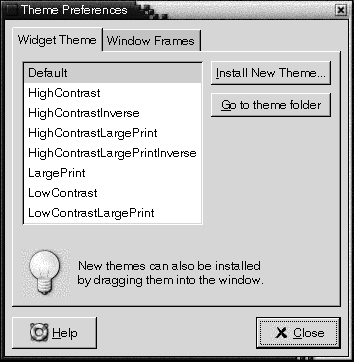
Table 9–15 lists the desktop environment theme settings that you can configure.
Table 9–15 Settings for Desktop Environment Themes|
Option |
Function |
|---|---|
|
Available themes |
Select the theme that you require from the list box. |
|
Install new theme |
You can add a theme to the list of available themes. The new theme must be an uncompressed folder. To add a theme to the list of available themes, click on the Install new theme button. A dialog is displayed. Enter the location of the theme folder in the drop-down combination box. Alternatively, to browse for the folder, click on the Browse button. When you have selected the folder, click OK. You can find many GTK themes on the Internet. |
|
Go to theme folder |
Click on this button to open a file manager window on the default theme folder. You can delete themes from the file manager window. |
Window Frame Settings
Use the Window Frames tabbed section of the Theme preference tool to select a theme for your window frames.
You can choose from the list of available themes, or you can install new themes.
The list of available window frame themes includes several themes for users
with accessibility requirements.
Figure 9–16 Window Frames Tabbed Section in the Theme Preference Tool
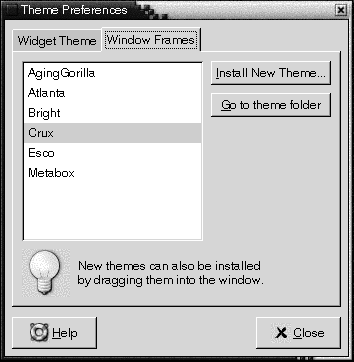
Table 9–16 lists the window frame theme settings that you can configure.
Table 9–16 Settings for Window Frame Themes|
Option |
Function |
|---|---|
|
Available themes |
Select the theme that you require from the list box. |
|
Install new theme |
You can add a theme to the list of available themes. The new theme must be an uncompressed folder. To add a theme to the list of available themes, click on the Install new theme button. A dialog is displayed. Enter the location of the theme folder in the drop-down combination box. Alternatively, to browse for the folder, click on the Browse button. When you have selected the folder, click OK. |
|
Go to theme folder |
Click on this button to open a file manager window on the default theme folder. You can delete themes from the file manager window. |
Customizing Window Focus
Use the Window Focus preference tool to customize window focus behavior for your
desktop environment.
Figure 9–17 Window Focus Preference Tool
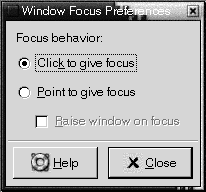
Table 9–17 lists the window focus settings that you can customize.
Table 9–17 Settings for Window Focus|
Option |
Function |
|---|---|
|
Click to give focus |
Select this option to give focus to a window when you click on the window. The window retains focus until you click on another window. |
|
Point to give focus |
Select this option to give focus to a window when you point to the window. The window retains focus until you point to another window. |
|
Raise window on focus |
Select this option if you want your windows to be raised when the windows receive focus. |
- © 2010, Oracle Corporation and/or its affiliates
